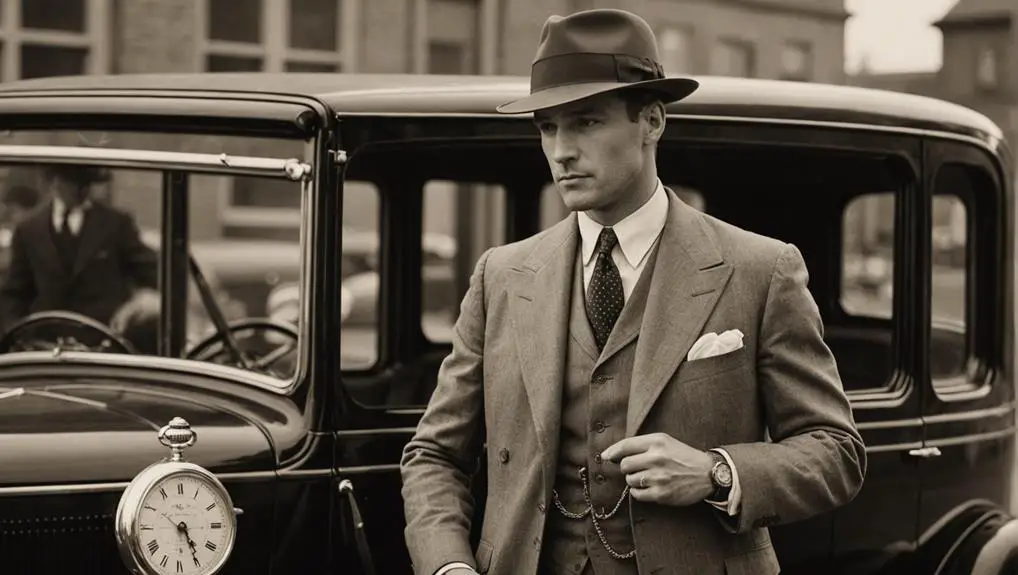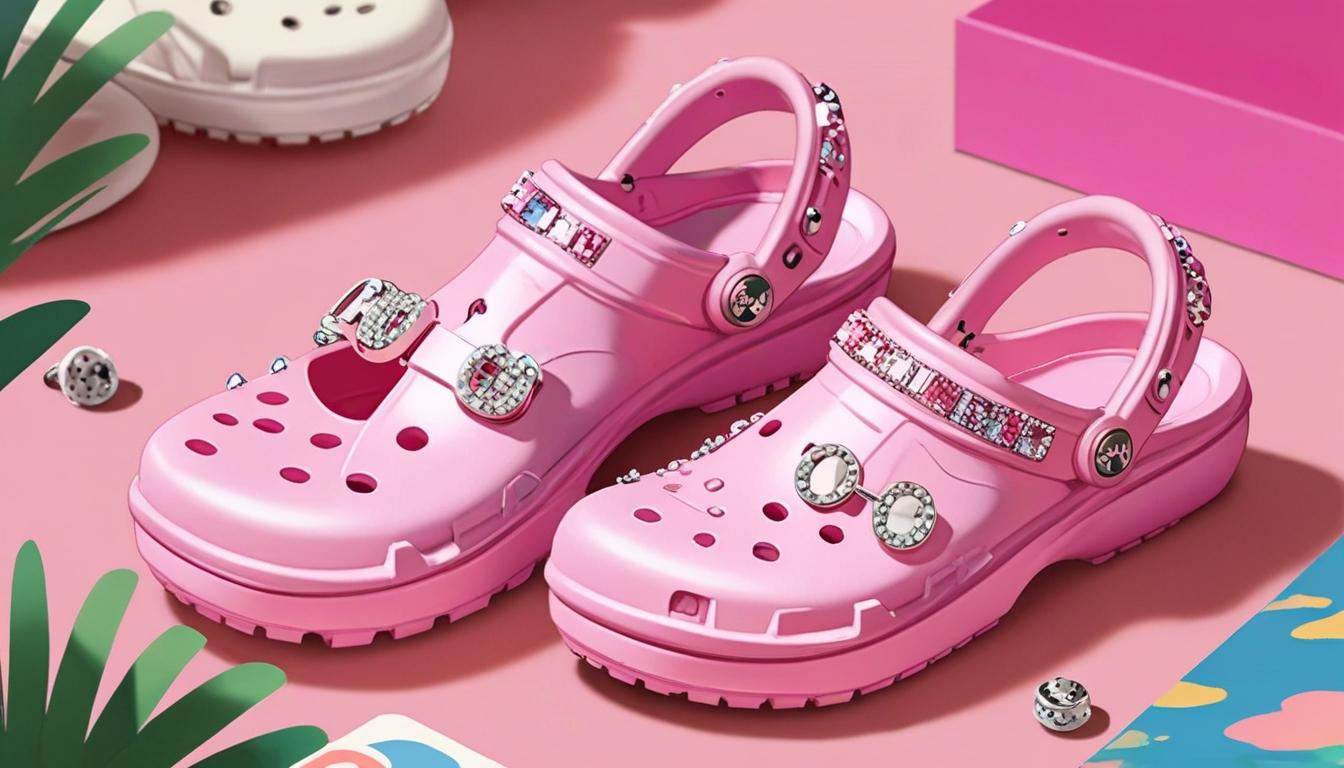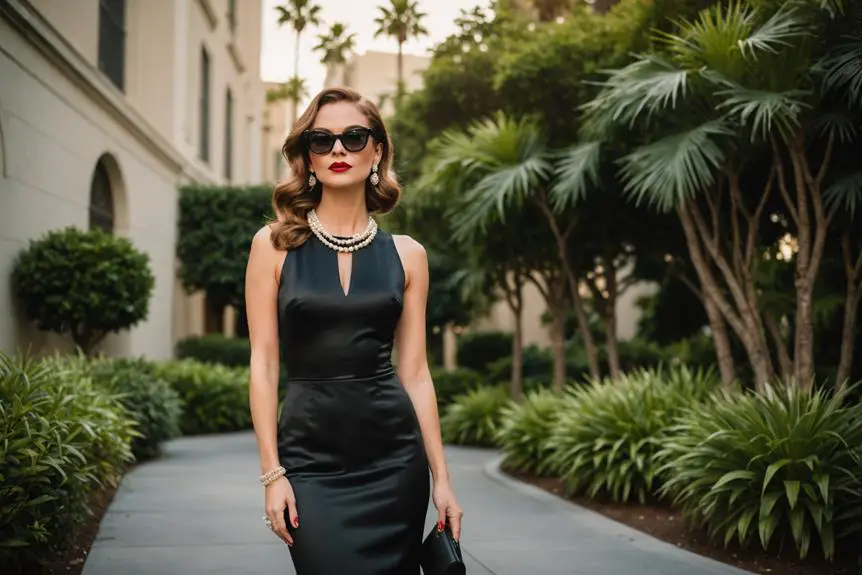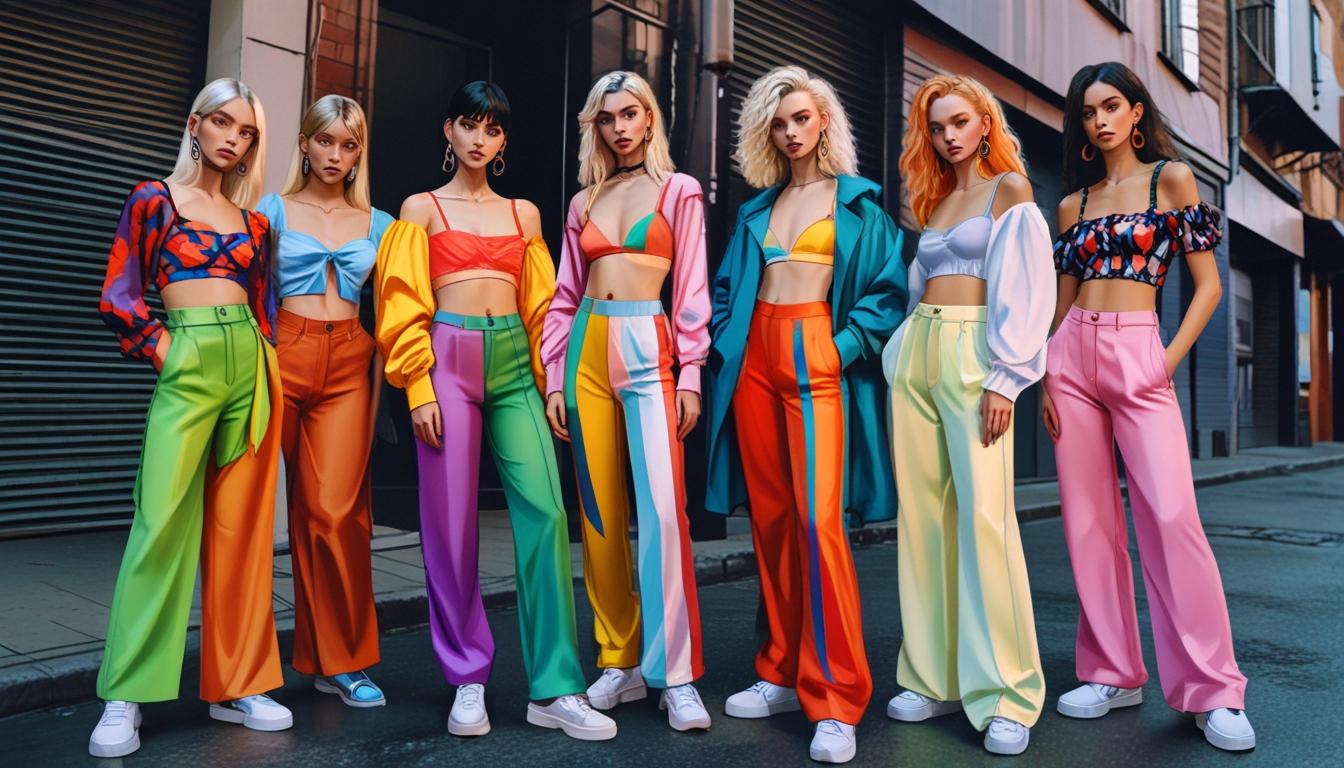In the 1930s, men's armbands evolved into fashionable accessories that highlighted both style and practicality. Originally designed to keep sleeves tidy for jobs like bartending, sleeve garters became popular among musicians, particularly in the jazz scene. They added flair to performances, symbolizing the decade's connection between music and fashion. Additionally, armbands were essential for card dealers, promoting professionalism and minimizing cheating in gambling. As the Great Depression influenced wardrobe choices, these armbands transformed into eye-catching statements, reflecting a blend of tradition and modernity. There's much more fascinating context surrounding this change, hinting at how fashion and function intertwined during this vibrant era.
Historical Significance of Armbands
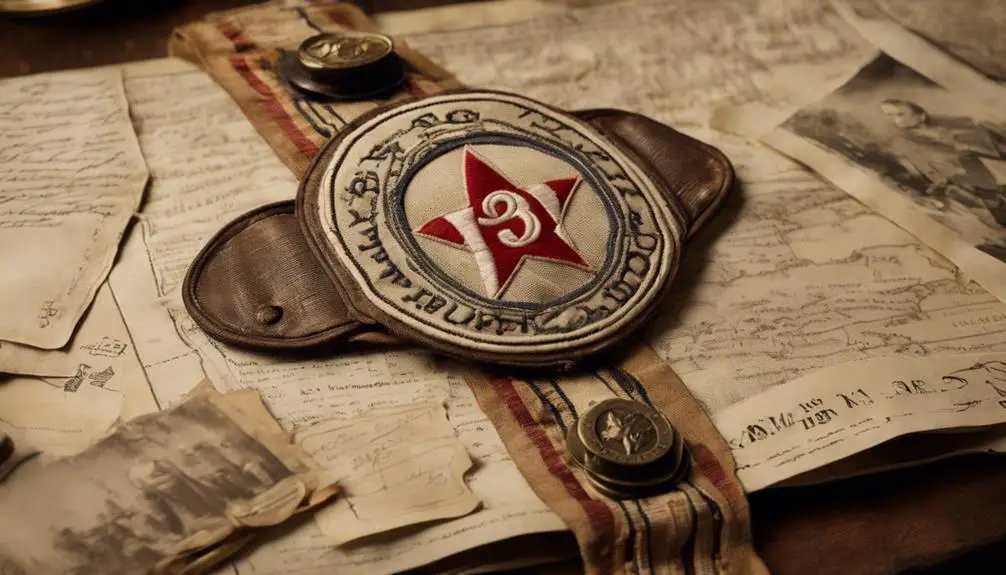
The historical significance of armbands, or sleeve garters, in the 1930s lies in their evolution from a practical accessory to a statement of style and masculinity. Originally designed to keep shirt sleeves tidy and prevent them from rolling up, sleeve garters were essential for professions such as accounting and bartending. However, as the decade progressed, they transformed into fashionable elements of men's attire, reflecting societal norms that emphasized traditional masculine roles.
The adjustable design of sleeve garters allowed men to customize their sleeve lengths, accommodating the longer sleeves of contemporary dress shirts. This practical function enhanced not only the wearer's appearance but also their professionalism. Artists like Norman Rockwell immortalized sleeve garters in cultural works, further cementing their status as symbols of style and dedication within various occupations.
Armbands in Music Culture
During the 1930s, sleeve garters became a staple among musicians, particularly in the vibrant jazz scene that thrived in clubs and saloons. These accessories weren't just practical; they evolved into fashion statements that enhanced musicians' stage presence. You'd see jazz pianists donning sleeve garters, their polished appearance reflecting the era's flair for style.
Barbershop quartets, like The Dapper Dans, also embraced sleeve garters, contributing to their dapper look while performing. This attention to attire revealed a deeper connection between music and fashion. Sleeve garters symbolized the well-dressed performer, a notion echoed by jazz historian Al Rose, who noted their significance in creating a nostalgic image of the past.
As musicians took to the stage, sleeve garters became emblematic of their artistic identity, showcasing a blend of aesthetic appeal and musical prowess. They evolved from mere functional items to stylish accessories, marking a shift in men's fashion during this period. The cultural significance of sleeve garters in music highlights how performance and style were intertwined, shaping the way audiences perceived artists and their craft.
Armbands and Gambling Practices
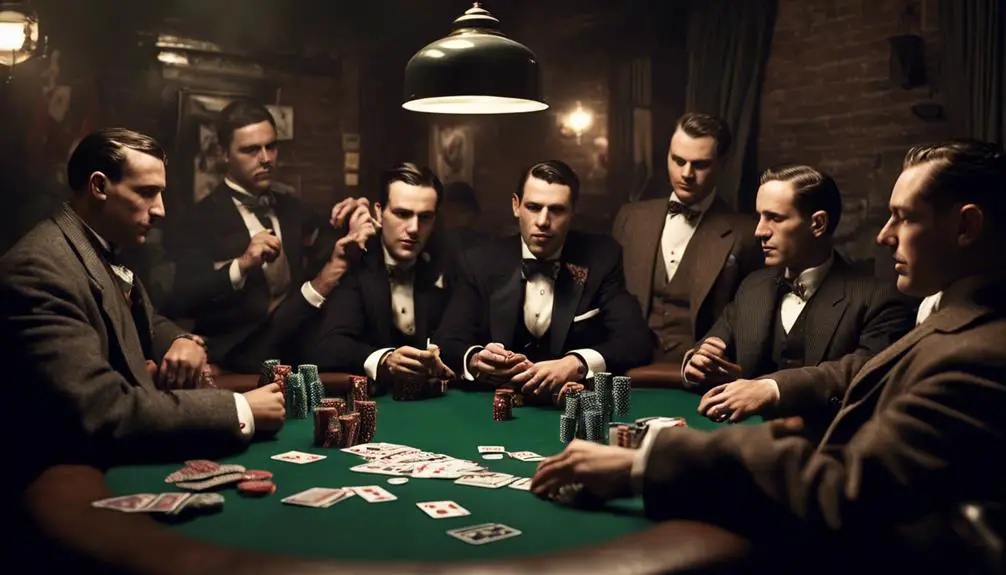
As sleeve garters found their place in the gambling world of the 1930s, they transformed from mere accessories into symbols of professionalism and style for card dealers. These armbands played a vital role in maintaining the integrity of card games, as they restricted the concealment of cards, thereby minimizing cheating. You'd see these sleeve garters paired with traditional gambling attire, which included:
- Vests: Tailored to enhance the overall sharpness of the dealer's appearance.
- Bow ties: Adding a touch of elegance that matched the sophisticated atmosphere of the casino.
- Visors: Completing the polished look while allowing for focused attention on the game.
The use of sleeve garters not only facilitated a neat appearance but also guaranteed that sleeves didn't obstruct the dealer's movements while handling cards. This practical fashion choice harked back to the late 19th and early 20th centuries, blending functionality with a rich historical context. The association with the Prohibition Era further accentuated their significance, as stylish attire became emblematic of the underground casino culture. In this way, sleeve garters encapsulated both utility and a sense of identity within the gambling scene.
Influence of Old West Imagery
Old West imagery played an essential role in popularizing sleeve garters, showcasing them as crucial accessories that blended functionality with style. When you think about gunslingers and musicians of that era, the presence of sleeve garters becomes a striking visual element that adds depth to their character. These accessories not only enhanced the aesthetic but also provided practical benefits, allowing for greater freedom of movement—critical in quick-draw situations typical of the fast-paced Old West.
Decorative elements like conchos adorned many sleeve garters, emphasizing the rugged yet stylish appeal of Western attire. This contributed to the cultural stereotype of the well-dressed gunslinger, reinforcing the idea that fashion held significance even in harsh environments. The presence of sleeve garters in rodeo outfits and Old West-themed costumes further illustrates their lasting impact on American Western culture.
Ultimately, the portrayal of sleeve garters in this context highlights how fashion intertwined with identity and functionality. The blend of ruggedness and style in Old West imagery not only popularized these accessories but also secured their legacy in men's fashion, influencing styles that would echo through the decades.
Evolution of Men's Fashion
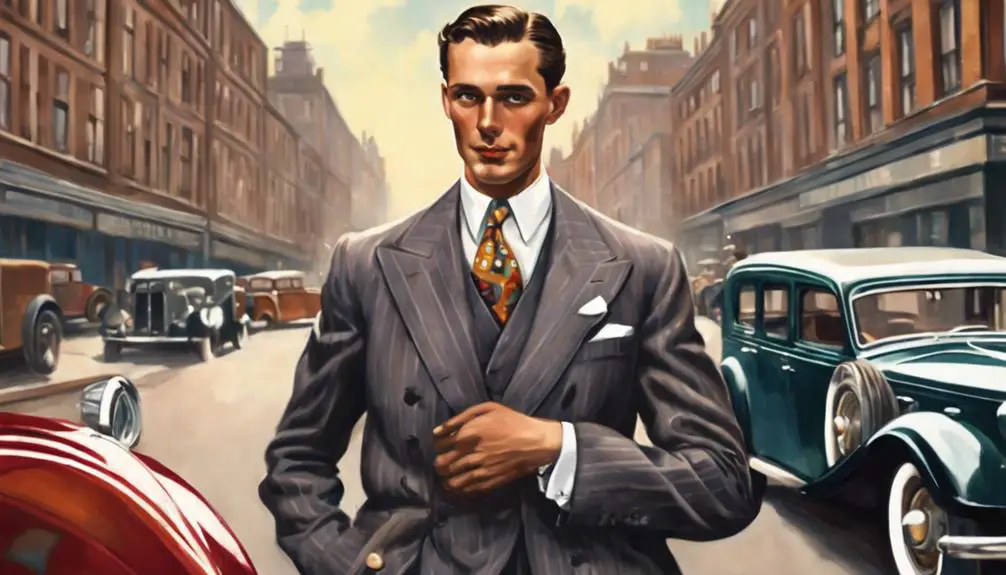
The 1930s marked a pivotal transformation in men's fashion, driven by the socio-economic realities of the Great Depression. You'll notice that this decade shifted towards more conservative looks, emphasizing practicality and comfort. This change was evident in how men tailored their wardrobes, opting for functionality over flamboyance.
Key elements of this evolution include:
- Suits in muted colors: Medium blue, tans, and greys became the favored palette, often featuring patterns like Glen Plaid and chalk stripes.
- Men's dress shirts evolution: With the introduction of buttons and fitted cuffs, sleeve garters lost their purpose, reflecting a shift in accessory usage.
- Vibrant accessories: Neckties with lively patterns and leather gloves emerged as essential components, enhancing the polished gentleman's appearance.
Frequently Asked Questions
Why Did Men Wear Arm Bands in the 1930s?
You'll find that men wore armbands to keep their sleeves tidy and in place. This practical accessory reflected a commitment to a polished appearance, blending functionality with style across various professional and social settings.
What Were Men's Armbands For?
Men's armbands served practical purposes, keeping sleeves tidy and preventing them from rolling up. They reflected a blend of utility and style, enhancing your appearance while maintaining a polished look in various professional and formal settings.
Did Men Wear Suspenders in the 1930s?
Yes, men wore suspenders in the 1930s to hold up high-waisted trousers. These accessories combined style and function, offering a tailored fit without the bulk of belts, enhancing the polished look of their outfits.
What Accessories Did Men Wear in the 1930s?
In the 1930s, you'd find men sporting vibrant neckties, leather gloves, and stylish fedoras. Decorative silk socks and polished Oxfords completed their outfits, while canes added an air of sophistication to their overall appearance.
